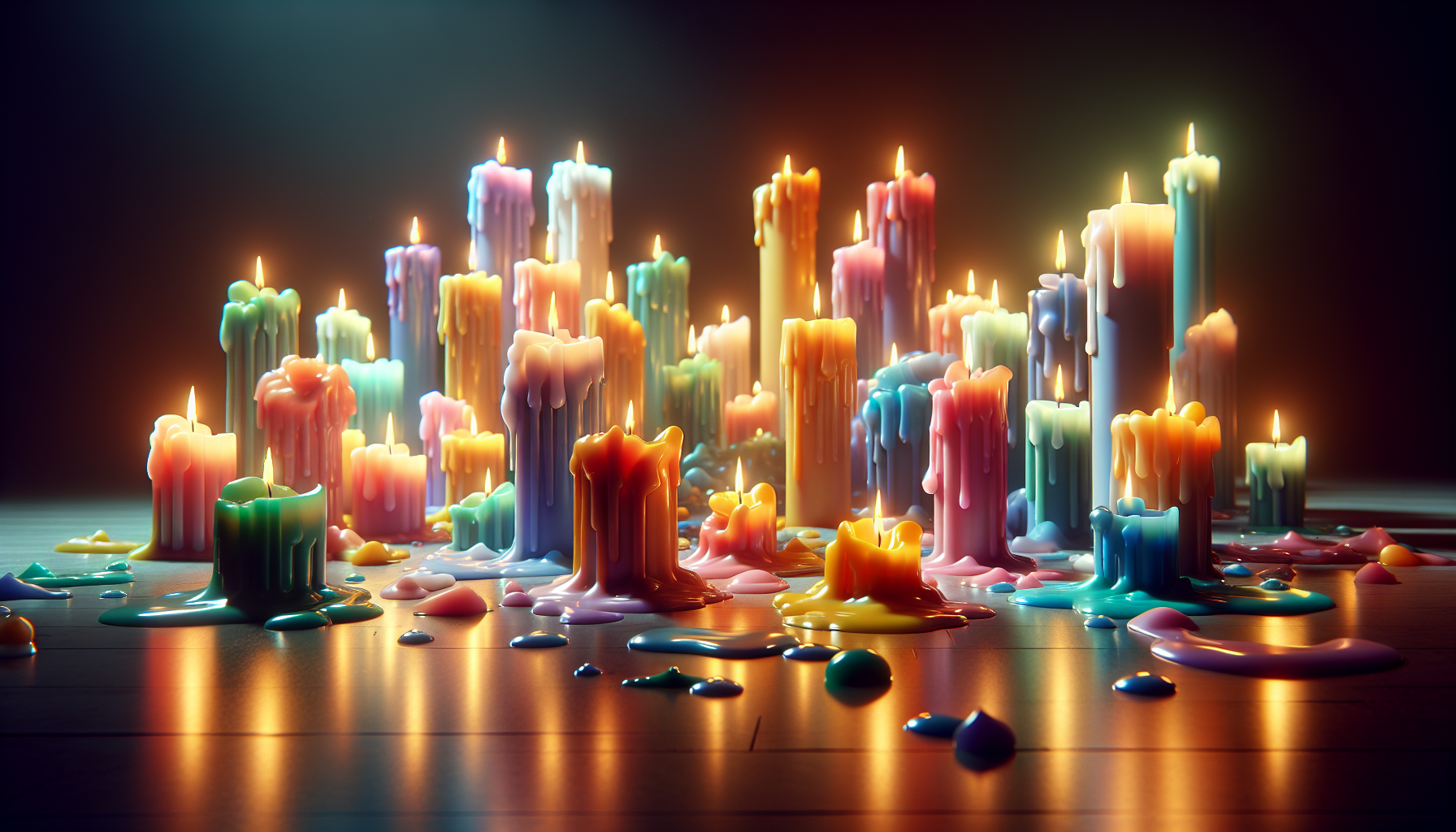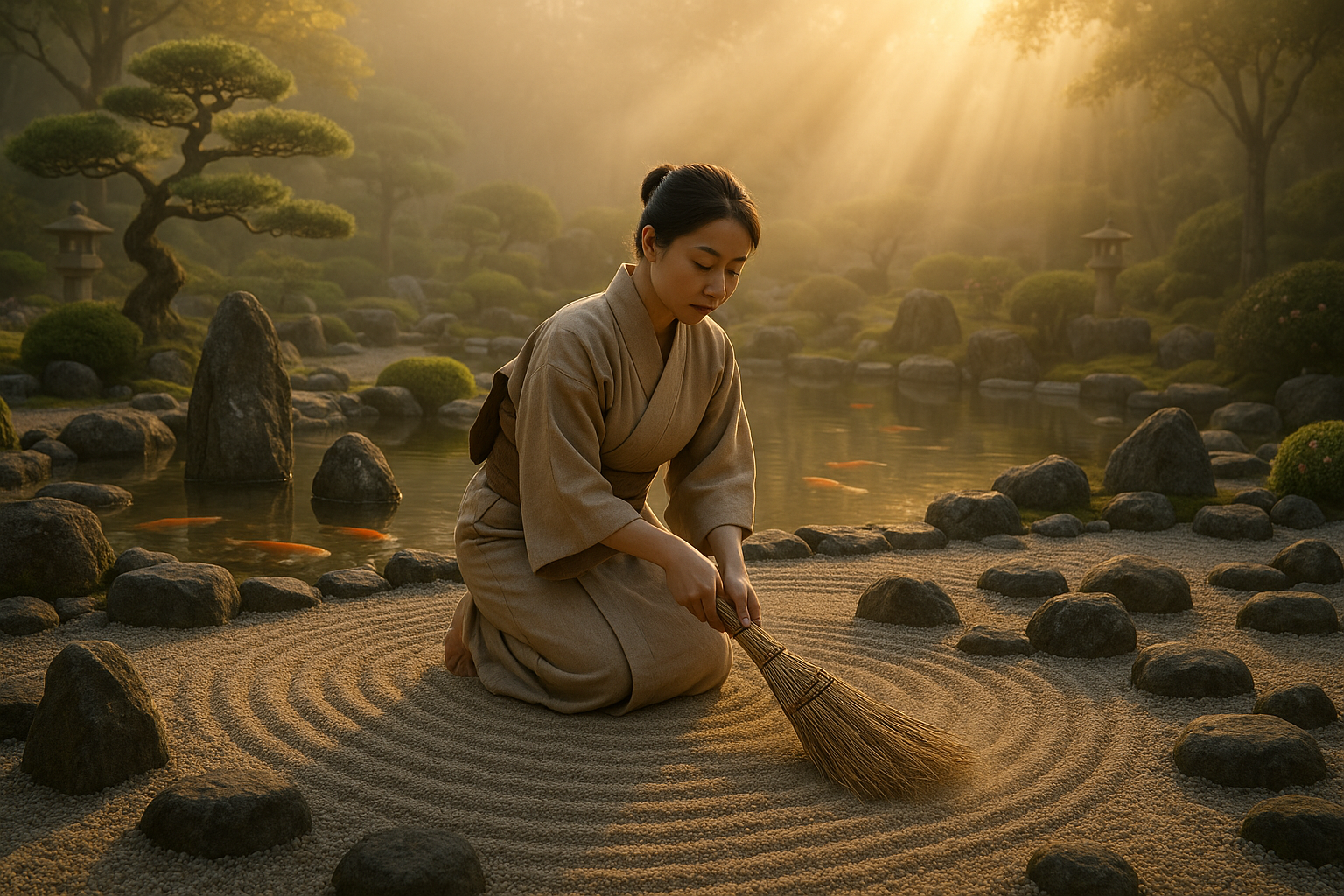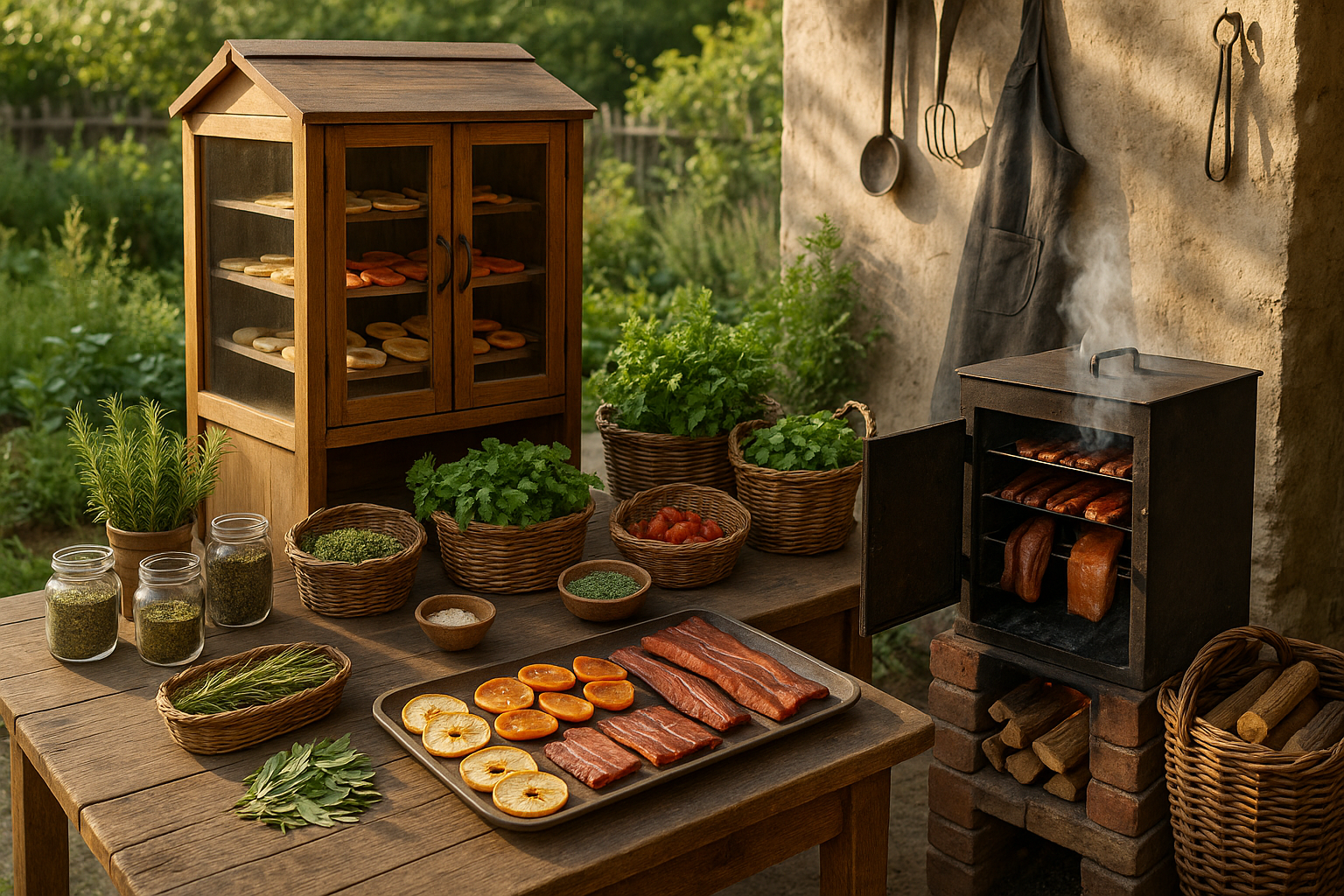In a world where every detail of our surroundings can impact our emotions and mindset, the power of colors often goes unnoticed. Yet, colors have been silently influencing human behavior and emotions for centuries. Among the various methods of harnessing this colorful influence, one stands out for its simplicity and effectiveness: candles. The gentle flicker of a candle flame has a calming effect, but did you know that the color of the candle can also play a significant role in shaping your mood and mindset? 🌈 In this article, we will dive deep into the world of candle colors and explore how they can illuminate your emotions, transforming your space into a sanctuary of positivity and balance.
Candles have been used for thousands of years, not just as a source of light, but as tools for ritual, meditation, and emotional healing. Each color holds a unique vibration and meaning, capable of eliciting different responses from our psyche. Whether you’re seeking tranquility, inspiration, or energy, the right candle color can be a simple yet profound way to enhance your daily life. We’ll uncover the secrets behind some of the most popular candle colors, such as blue for calmness and relaxation, red for passion and energy, and green for growth and renewal. Additionally, we’ll explore how these colors can be strategically used in different spaces of your home or workplace to create a harmonious and inspiring environment. 🕯️
As we journey through this vibrant exploration, you will gain insight into the psychological and emotional impacts of color, informed by both ancient wisdom and modern science. We will delve into the art of choosing the perfect candle color to match your emotional needs and intentions, guiding you towards a more mindful and enriched life experience. By the end of this article, you will be equipped with the knowledge to select and utilize candle colors with intention, transforming your personal space into a haven of emotional well-being and mental clarity. So, light a candle, settle in, and let’s uncover how these colorful beacons of light can influence your mood and mindset for the better. ✨
Understanding the Basics: The Psychology of Color
Colors have a profound impact on human emotions and behaviors. This phenomenon is known as color psychology, a field of study that delves into how different hues can influence moods, feelings, and even decision-making processes. When it comes to candles, the color of the wax can be more than just a decorative choice; it can serve as a powerful tool for enhancing ambiance and altering one’s mental state. By understanding the psychology of color, you can select candle colors that resonate with your desired emotional or mental outcomes.
Each color is associated with specific emotions and states of mind. For instance, red is often linked with passion and energy, while blue is associated with calmness and serenity. The effects of color on mood are not universally agreed upon, as cultural differences can significantly alter the perception of color. However, there is a general consensus on certain emotional responses to color that can be considered when choosing candle colors for specific moods or settings.
Color psychology can be applied in various aspects of life, from interior design to marketing strategies, and even in personal wellbeing practices. Candles provide an accessible and aesthetically pleasing way to incorporate color psychology into everyday life. By selecting candles in colors that align with your emotional needs, you can create an environment that supports relaxation, focus, energy, or whatever your current state requires. Let’s explore the specifics of how different candle colors can influence your emotions and mindset.
The Symbolism and Effects of Candle Colors
Red: Passion and Energy
Red is a vibrant and stimulating color that is often associated with passion, energy, and excitement. Candles in shades of red can invigorate a space, making them ideal for areas where you want to encourage lively conversation or activity. Red candles are also said to enhance romance, making them a popular choice for intimate dinners or special occasions. However, because red is a powerful color, it should be used sparingly to avoid feelings of aggression or restlessness.
Blue: Calmness and Peace
Blue candles are perfect for creating a serene and tranquil environment. The color blue is linked to calmness, stability, and peace, making it an excellent choice for meditation spaces or bedrooms. Lighting a blue candle can help reduce stress and promote relaxation. This color is particularly beneficial for those who struggle with anxiety or insomnia, as it is known to have a soothing effect on the mind.
Green: Balance and Growth
Green represents balance, growth, and renewal. It is a color that is closely associated with nature, which can bring a sense of peace and rejuvenation when used in candle form. Green candles are ideal for spaces where you wish to promote healing or personal growth. They can also be used to foster harmony and balance within a group setting, making them a good choice for communal areas.
Choosing the Right Candle Colors for Your Needs
When selecting candle colors, it is essential to consider the intended purpose and the atmosphere you wish to create. Each color has its unique symbolism and effects, which can be harnessed to achieve specific emotional and psychological outcomes. Below is a helpful table that outlines various candle colors and their associated meanings:
| Color | Meaning | Best Used For |
|---|---|---|
| Red | Passion, Energy | Romantic settings, energizing environments |
| Blue | Calmness, Peace | Meditation, relaxation spaces |
| Green | Balance, Growth | Healing environments, promoting harmony |
| Yellow | Happiness, Positivity | Uplifting spirits, enhancing creativity |
| Purple | Spirituality, Wisdom | Meditation, gaining insight |
For a more in-depth understanding of how these colors can influence your mood, watch this insightful video: Candle Color Meanings (Mindful Living Channel). 🎥
Practical Applications: How to Use Candle Colors in Your Daily Life
Enhancing Meditation and Mindfulness Practices
One of the most effective ways to incorporate candle colors into your daily life is through meditation and mindfulness practices. Selecting a candle color that aligns with your meditation goals can enhance your session by providing a visual focus point that embodies your intention. For example, if you’re seeking calmness and clarity, a blue candle can help you center your mind. If you’re aiming for deep insight or spiritual connection, a purple candle might be the perfect accompaniment to your practice.
Creating a Relaxing Home Environment
Using candle colors to influence the ambiance of your home is a simple yet powerful way to create a space that nurtures your emotional wellbeing. By strategically placing candles in areas where you spend the most time, you can subtly influence your mood throughout the day. Consider using green candles in your living room to foster balance and harmony among family members, or place yellow candles in your home office to boost creativity and positivity.
Setting the Mood for Social Gatherings
Candle colors can also play a significant role in setting the mood for social events. Whether you’re hosting a dinner party or a casual get-together, choosing the right candle colors can enhance the experience for your guests. Red candles can create a warm and inviting atmosphere, while blue candles can encourage relaxation and open communication. Be mindful of the overall theme and purpose of your event when selecting candle colors to ensure they complement the desired mood.
Conclusion: Illuminating Your Emotional Landscape Through Candle Colors
In exploring the fascinating interplay between candle colors and our emotional and mental states, we’ve delved into a realm where ancient traditions meet modern science. Throughout this journey, we’ve uncovered how something as simple as the color of a candle can serve as a powerful tool for influencing mood, mindset, and even spiritual well-being. Let’s revisit the key points that have illuminated our path.
Firstly, we discussed the historical context of using candles in rituals and ceremonies across various cultures. This tradition has transcended time, underscoring the universal recognition of candles as vessels of intention and change. Whether in religious ceremonies or personal meditation practices, candles have long been used to signify transition and transformation.
Moving on to the psychological effects, we examined how different colors can evoke specific emotional responses. Red candles, for example, are not just visually striking but are also associated with passion, energy, and stimulation. They can invigorate your spirit and motivate you to take action. On the other hand, blue candles embody calmness and serenity, making them ideal for stress relief and promoting restful sleep. Green candles, symbolizing growth and balance, can be used to foster a sense of renewal and harmony in your surroundings.
Additionally, we explored the practical applications of these insights in daily life. By consciously selecting candle colors based on your current emotional needs or desired mindset, you can create environments that support your goals. Whether it’s fostering creativity with a yellow candle or invoking a sense of protection with a black candle, the possibilities are as varied as the colors themselves.
It’s important to recognize the role of intention in this practice. As with many aspects of personal growth and self-care, the power of candle colors is amplified when paired with a clear intention. Setting a mindful purpose before lighting a candle can help you focus your energy and manifest desired changes more effectively.
Moreover, we touched on the scientific perspectives that lend credibility to these practices. Research in color psychology suggests that colors can have measurable effects on our psychological state, reinforcing the traditional wisdom surrounding candle use. This blend of science and spirituality provides a robust framework for understanding how such a simple tool can yield profound benefits.
The importance of this topic lies in its accessibility and versatility. In an age where we are constantly bombarded with digital stimuli and fast-paced living, candles offer a tangible and immediate way to reconnect with ourselves. They remind us of the beauty in simplicity and the power of our environment in shaping our mental and emotional landscapes.
As we conclude, I encourage you to take these insights and apply them in your daily life. Experiment with different candle colors and observe the shifts in your mood and mindset. Share your experiences with friends and family, fostering discussions about the subtle yet significant impact of our surroundings on our well-being. If you find these practices beneficial, consider sharing this article with others who might be interested in exploring the art of candle magic.
Your journey with candles is just beginning, and the potential for discovery is vast. Whether you’re seeking tranquility, inspiration, or empowerment, the right candle color can be your ally. Embrace this tool with an open heart and a curious mind, and watch as it transforms your personal space into a sanctuary of intention and healing. 🌟
For those interested in further exploring this topic, here are some resources that provide additional insights into the psychological and spiritual aspects of color and candles:
1. Color Psychology: How Colors Influence Mood and Behavior
2. The Spiritual Significance of Candle Colors
Remember, the power to shape your emotional world is in your hands, and sometimes, all it takes is the gentle glow of a candle. 🕯️





